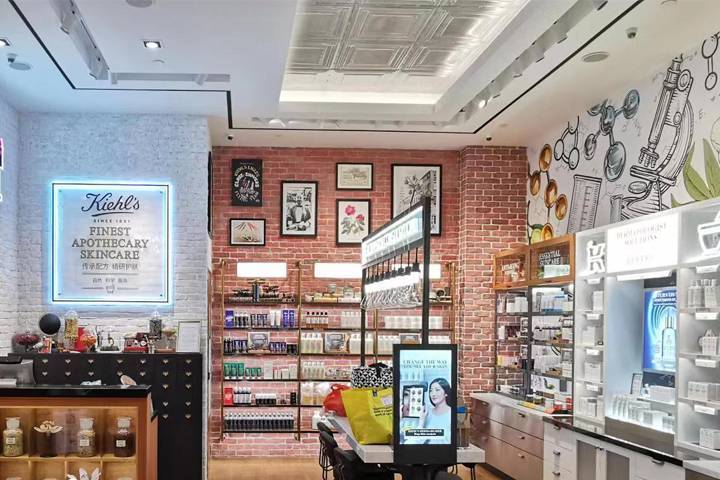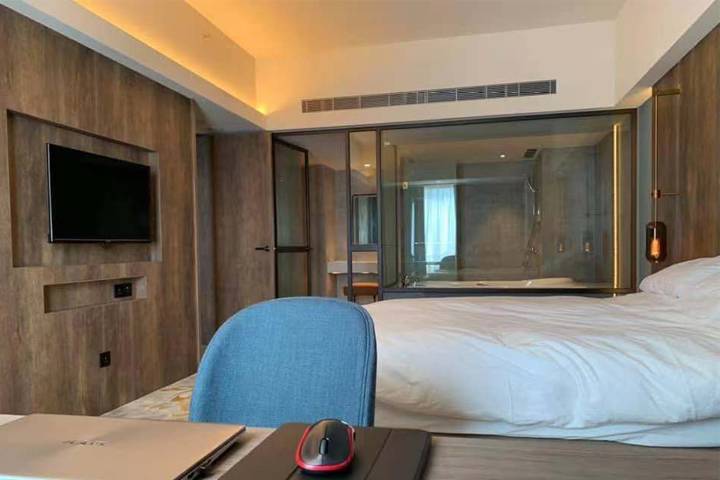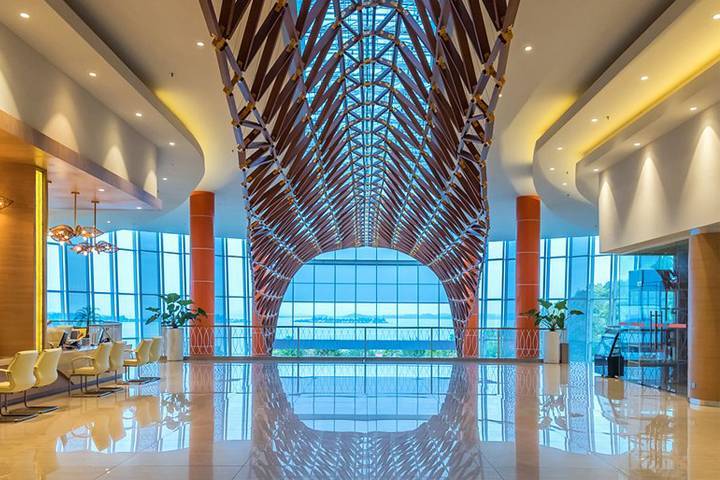Table of Contents
As the global lighting industry continues to develop, the application areas such as residential homes, office buildings, shops, factories, sports lighting, landscape lighting, and plant lighting are becoming increasingly widespread. Customer requirements for lighting products are also constantly upgrading. In addition to ensuring that basic requirements are met, such as appropriate and uniform illuminance and brightness, ideal light color and light source color rendering, and glare-free lighting, it is also necessary to guarantee a good visual effect for customers. As customer demands for lighting products continue to evolve, personalized and innovative special requirements will become the development direction of the lighting industry. Lighting suppliers need to provide personalized and customized services to meet the needs of different consumers and gain a larger share of the global market. This comprehensive guide will help downstream customers find the best lighting customization suppliers to ensure the completion of high-quality and efficient project lightings.
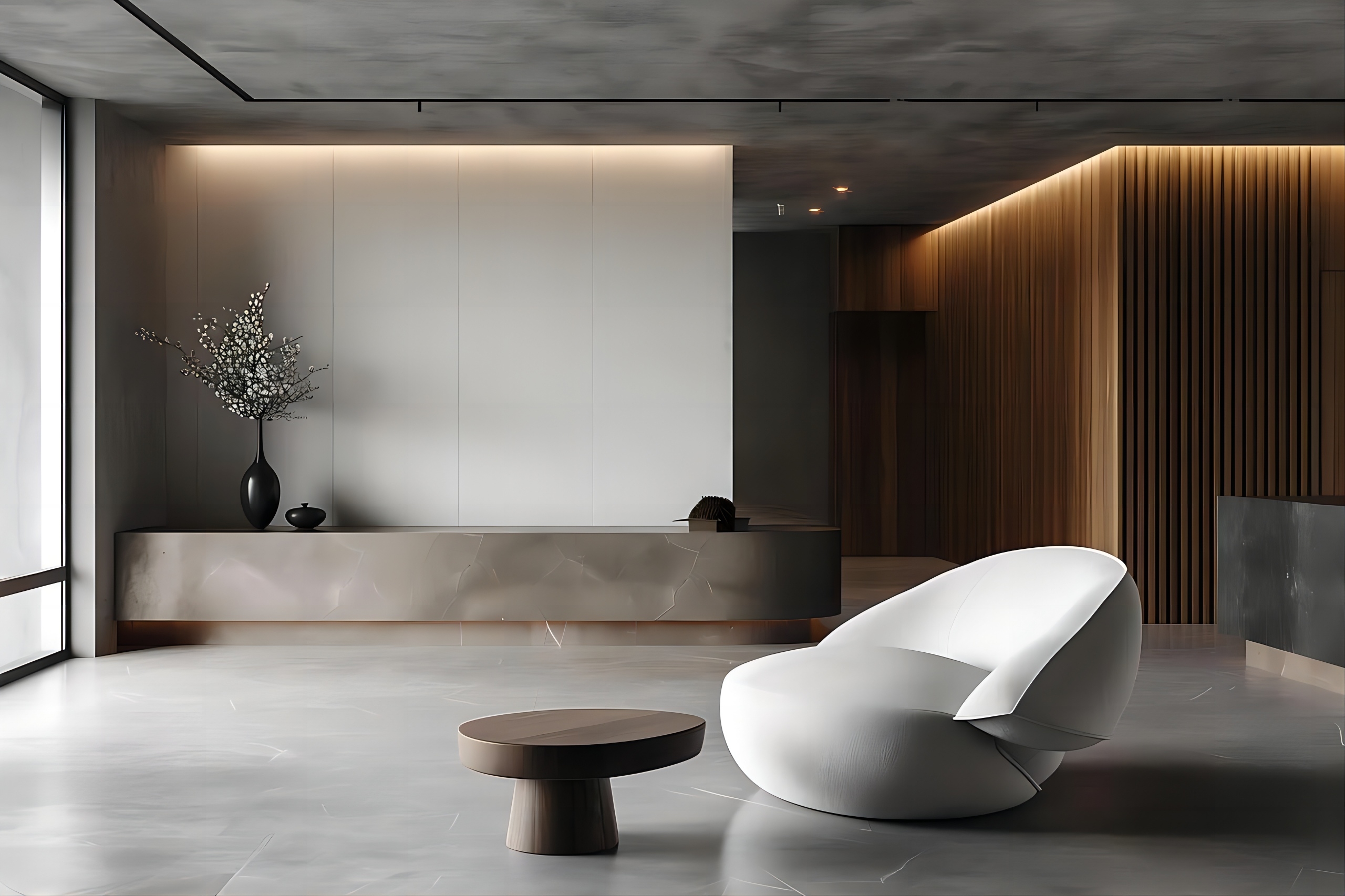
1. Importance of Quality Custom Light Suppliers
Choosing the right supplier for custom light fixtures can determine the overall success of a project. High-quality custom lighting ensures better performance, longer lifespan, and greater energy efficiency. Additionally, a reliable supplier can provide comprehensive support, from design to after-sales service, ensuring that all project requirements are met seamlessly.
2. Project demand involves diversified lighting categories, analysing the advantages and disadvantages of factories and industrial and trade integration companies.

Understanding the diverse lighting needs of different projects is essential for making informed decisions. Here, we analyze the advantages and disadvantages of working with factories versus industrial and trade integration companies.
2.1 Advantages and Disadvantages of Factories
Advantages: Factories offer direct manufacturing, which can save on costs. Better control and supervision of production processes to ensure higher quality control.
Disadvantages: The factory may have a limited range of products, focusing on specific types of lighting. Lower flexibility compared to integration companies, and customization options may be limited,It is difficult to adapt to the small batch, many varieties of order demand.
2.2 Advantages and Disadvantages of Industrial and Trade Integration Companies
Advantages: Trading companies provide one-stop services, including procurement, logistics, quality control, etc., to help customers save time and effort. Integration companies offer a wider range of products to meet a variety of lighting needs. These companies often have better customization capabilities and can offer customized solutions.
Disadvantages: Participation of third parties may increase total costs, and reliance on other manufacturers sometimes leads to delays or quality problems.
Through this comprehensive comparison, it can be seen that factories and trading companies each have their applicability in different scenarios. For companies that have the capability to independently manage production and quality, especially in situations with large order volumes and strict cost and quality control requirements, factory cooperation is a more suitable choice.Conversely, for companies that need comprehensive services, are new to the market, or do not have a dedicated international trade team, cooperation with Trade Integration Companies can better meet their needs. Trade Integration Companies provide one-stop solutions, serve as language and cultural bridges, and offer a wide range of product choices, effectively saving time and management costs.We hope this comparison chart can help you make the best choice between factories and Trade Integration Companies, and achieve success in your foreign trade cooperation!
3. Five Factors to be considered when choosing a quality customized lighting supplier.
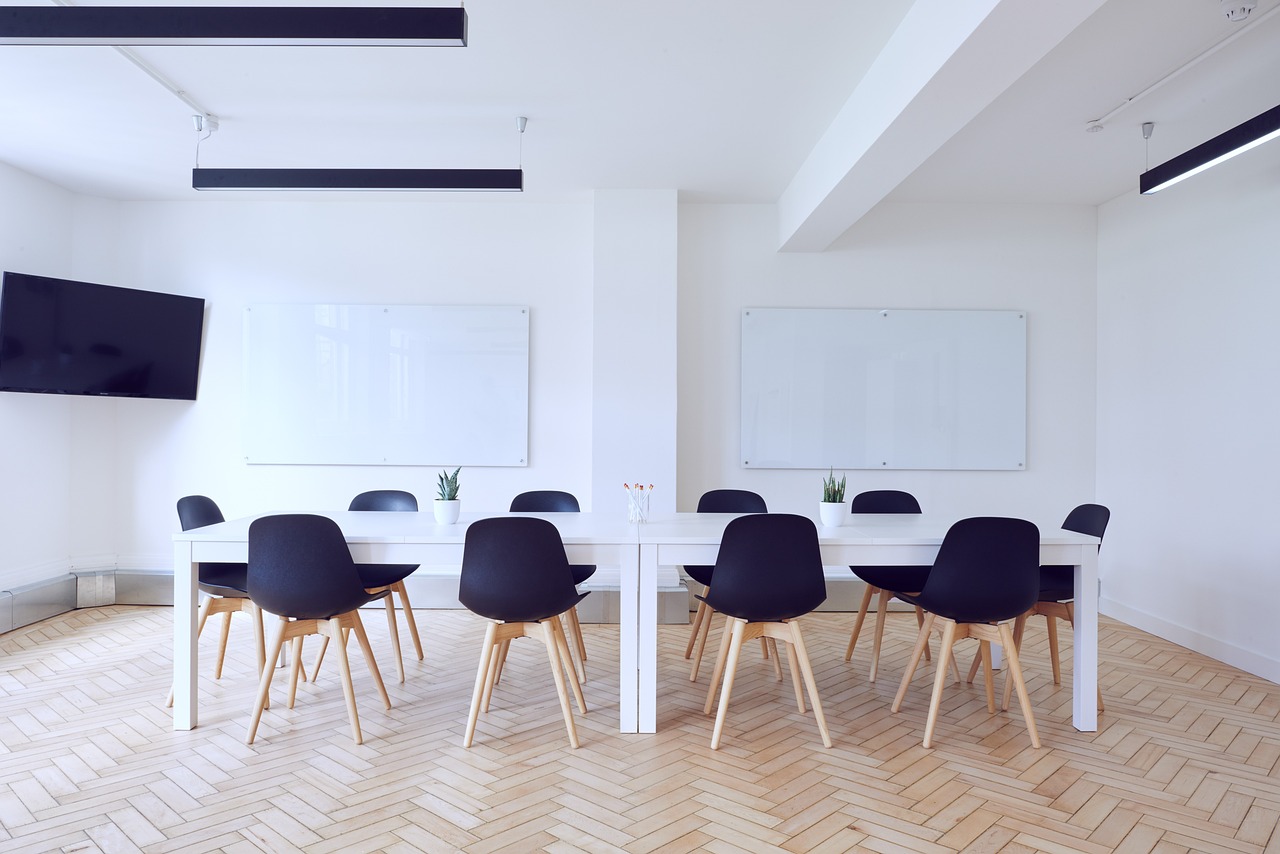
To ensure the success of your project, consider the following critical factors when selecting a custom lighting supplier:
3.1 Reasonable Price
Competitive pricing is essential, but it should not come at the expense of quality. Evaluate the total cost of ownership, including installation, maintenance, and energy consumption. A supplier offering a reasonable price for high-quality products can provide better value in the long run.
3.2 Product Quality Assurance
Quality is paramount in custom lighting. Ensure that the supplier adheres to strict quality control measures and holds relevant certifications, such as ISO and CE. High-quality products reduce the risk of failures and ensure long-term reliability, which is crucial for large-scale projects.
3.3 Smooth Service Communication
Effective communication is vital for a successful partnership. Choose suppliers with proficient English skills and a clear understanding of your project requirements. Smooth service communication helps in addressing any issues promptly and ensures that all specifications are met accurately.
3.4 Timely Production Delivery
Meeting project deadlines is critical. Select suppliers with a proven track record of timely delivery and efficient production processes. Delays can cause significant setbacks in project timelines, so timely delivery is a key consideration.
3.5 After-Sales Warranty Service
Reliable after-sales support is essential for addressing any issues that may arise post-installation. Check the supplier’s warranty policies and their commitment to customer satisfaction. A robust warranty service ensures peace of mind and continued support.
4. Customized lighting categories
Understanding the various categories of customized lighting helps in selecting the right solutions for your project. Here are the primary categories to consider:
4.1 Indoor Lighting
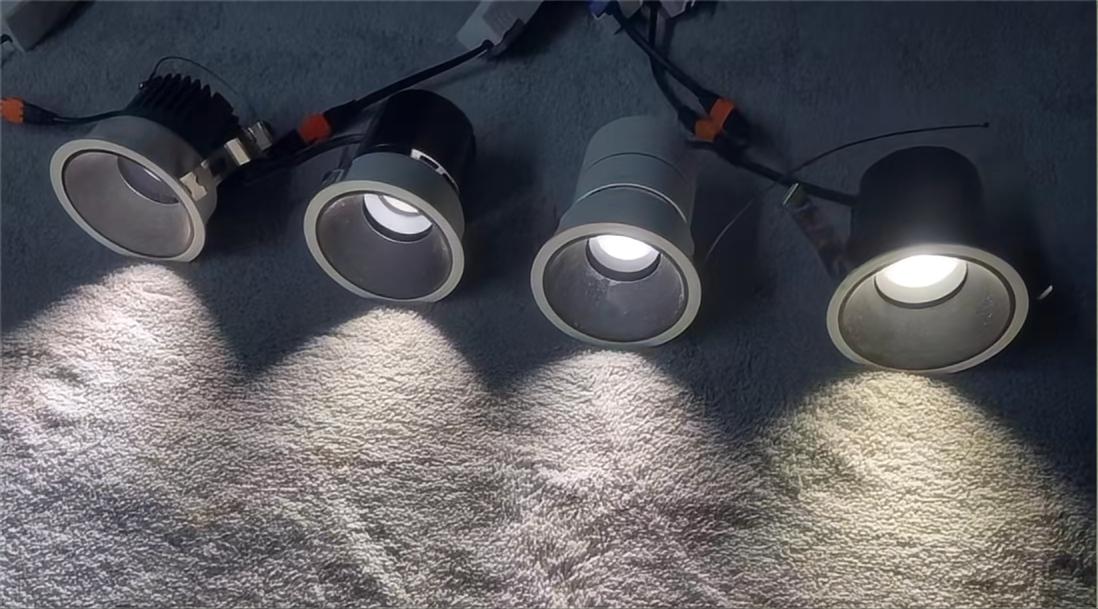
Indoor lighting solutions include down lights, spotlights, ceiling lamps, wall lights, aluminum profile with strip lights, track lights, chandeliers, decorative lights, and high bay lights. Indoor light fixtures need to balance aesthetics with functionality, ensuring optimal illumination and energy efficiency.
4.2 Outdoor Landscape Lighting

Outdoor landscape lighting encompasses lawn lights, bollard lights, street lights, solar street lights, wall lights, step lights, spike lights, and flood lights. Modern landscape lighting solutions often feature LED lights outdoor waterproof and color-changing landscape lights to enhance outdoor space.
4.3 Outdoor Facade Lighting

Outdoor facade lighting involves wall washers and waterproof strip lights, designed to highlight architectural features and improve safety. Waterproof outdoor LED flood lights and outdoor LED wall lights are common choices for facade illumination.
5. 10 tips to customize the lighting fixtures required by customers
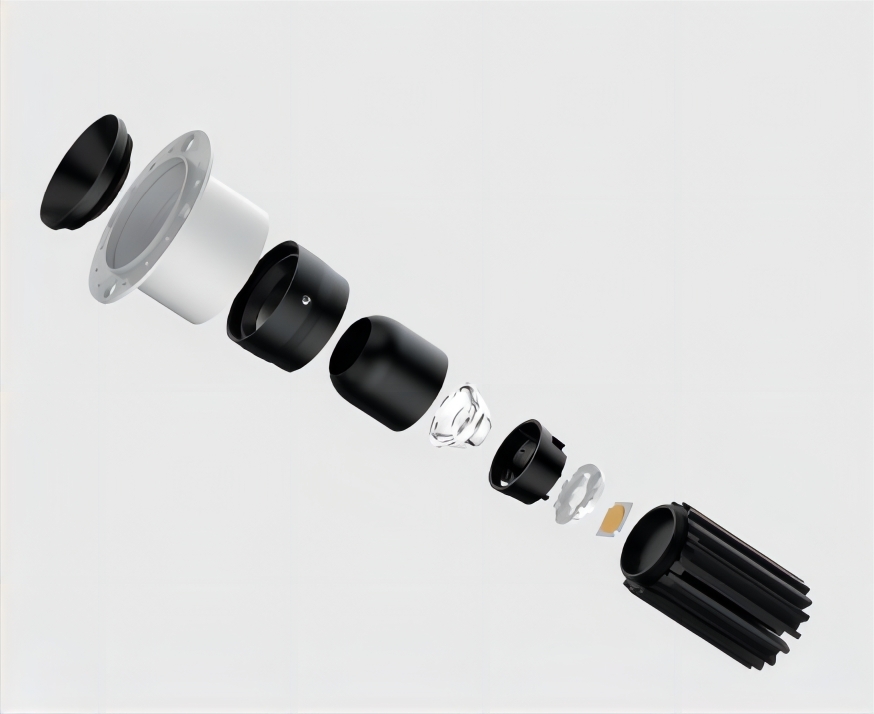
Customization is key to achieving the perfect lighting solution for your project. Here are ten tips for customizing your lighting fixtures:
5.1 Choosing the Brand of LED Chips
The most crucial part of a lighting fixture is the chip. The best LED light chips available in China come from manufacturers in Europe, America, Japan, South Korea, and China Taiwan. Examples include Cree and Bridgelux from the United States, Osram from Germany, Epistar from China Taiwan, and for a good balance of performance and cost, there are Chinese options like Luminus and Sanan chips. Choose an LED chip brand that meets your performance and efficiency requirements. Well-known brands ensure higher reliability and better performance.
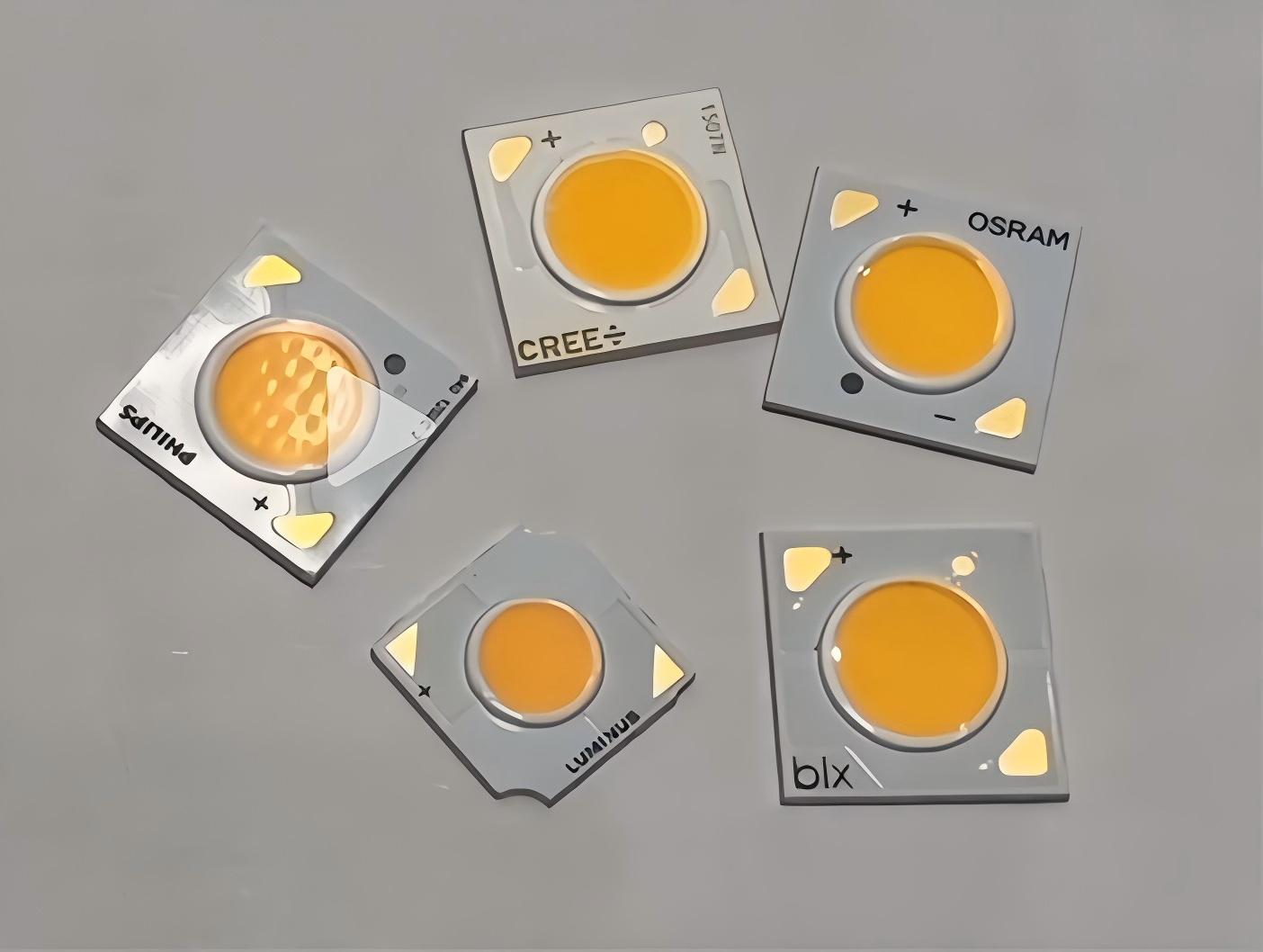
5.2 Choosing the Brand of Driver
The driver is the heart of downlights and spotlights. Better drivers lead to more stable light fixtures with longer lifespans. Currently, for lighting fixture drivers, the top choices are Lifud, ELG, Philips, and Ltech, followed by Meanwell, Moso, and Tridonic. The driver power supply affects the stability and lifespan of light fixtures, so its quality and compatibility often play a decisive role.
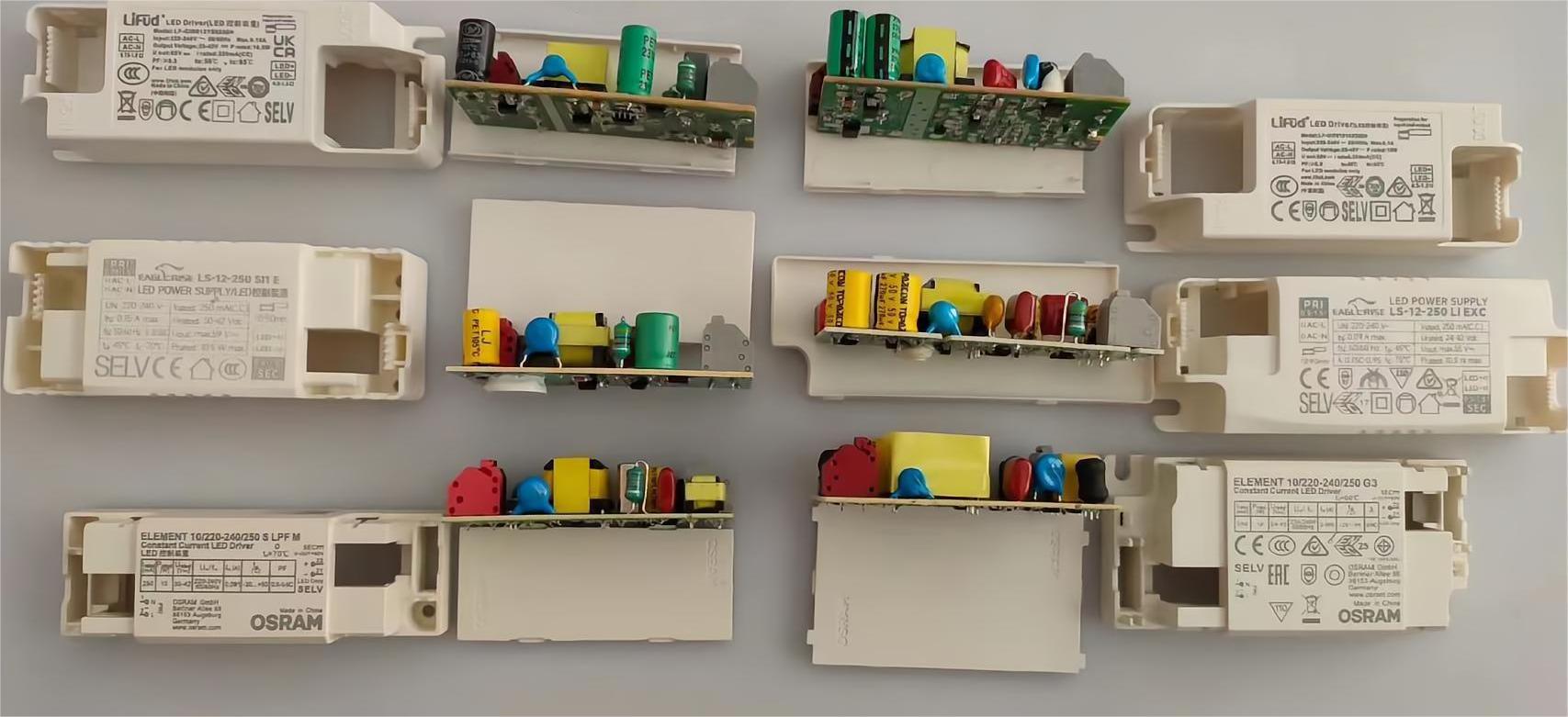
If dimming is required, the selection and adaptation of the driver become even more crucial. Ensuring that the driver’s parameters match the LED light source is essential for proper dimming performance. Currently, dimming power supply drivers typically have several output current settings, adjustable through DIP switches, to match corresponding LED fixtures.
Additionally, the issue of flicker mentioned by many is actually a problem with the driver power supply, not the LED chip itself. Flicker is entirely dependent on the driver’s circuit design and components used, such as whether it employs stable and reliable ICs, high-quality electrolytic capacitors, and whether it matches the fixture’s power requirements.
5.3 Determine the proper wattage for any rooms.
Calculate Required Wattage
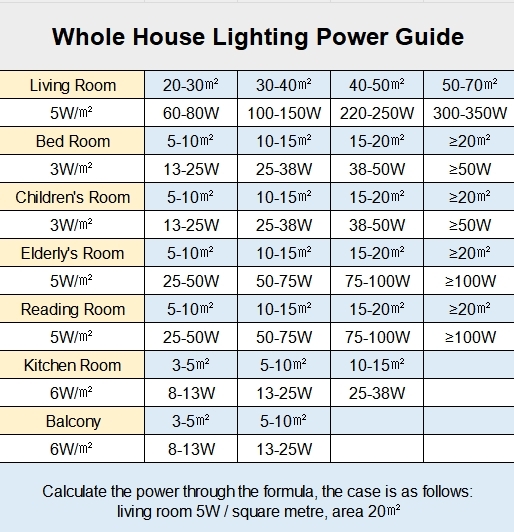
A practical method to determine the total wattage needed is to calculate the room’s square footage and multiply it by a factor:
General Lighting: Multiply the room’s square footage by 1.5 to find the total wattage needed. For example, a 16′ by 14′ room (224 sq ft) would require 336 watts (224 x 1.5).
Task Lighting: For areas needing direct lighting, calculate the surface area (e.g., a desk) and multiply by 3 to find the required wattage.
Choosing the appropriate wattage for light fixtures requires a comprehensive consideration of factors such as room size, usage environment, and energy efficiency. The function and frequency of use of different rooms will also influence the selection of light fixture wattage. By following the above guidelines, you can more scientifically select the suitable wattage for your home’s light fixtures.
5.4 Selecting the appropriate color temprature
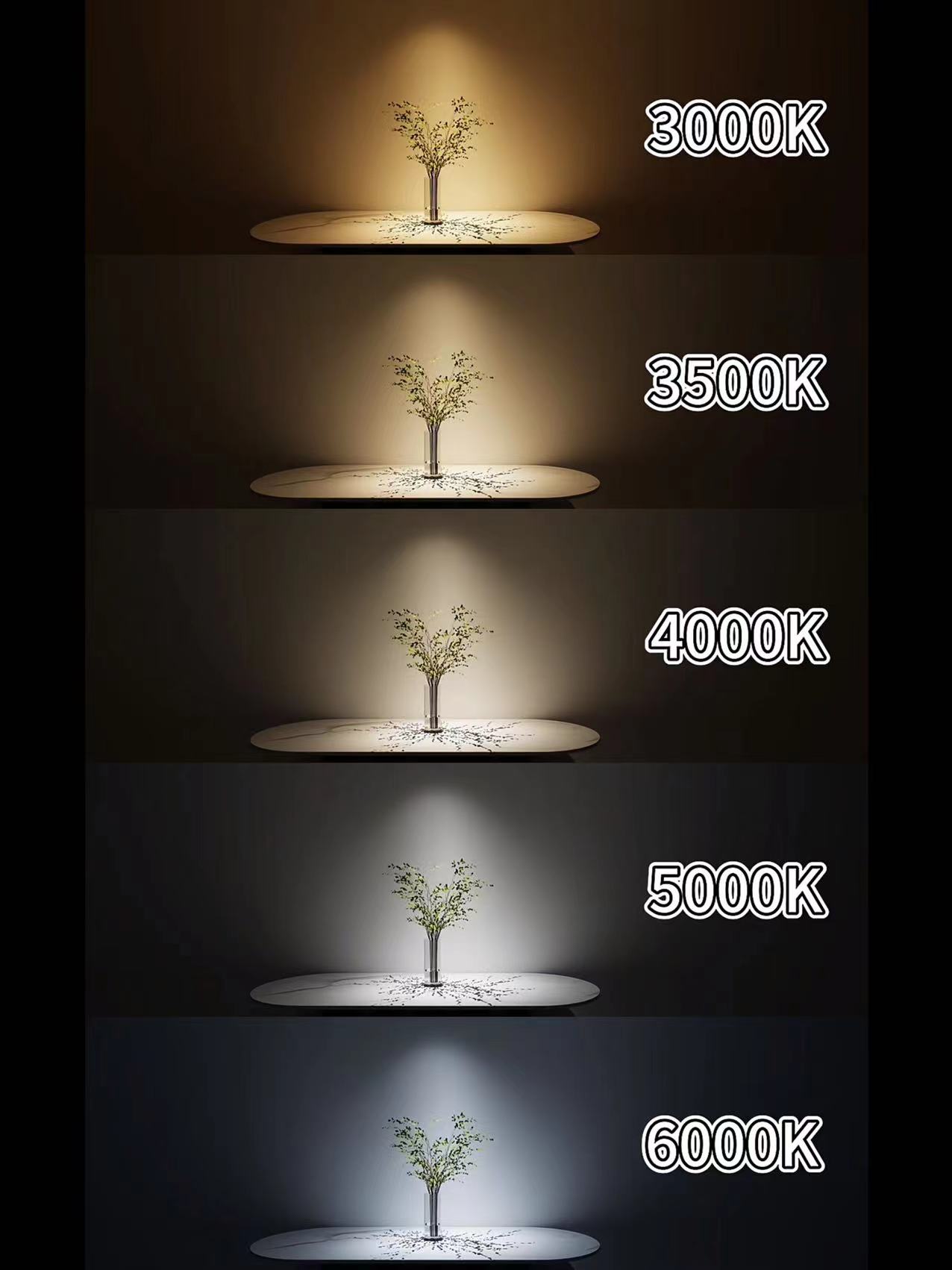
Color temperature is typically measured in units of “Kelvin (K),” and different color temperatures produce different lighting effects. In simple terms, it refers to how the human eye perceives the light source – whether the light appears yellow or white, cool or warm. People’s needs for color temperature vary at different times.
The lower the color temperature value, the warmer the light color. The higher the color temperature value, the cooler the light color. Different color temperatures create distinctly different atmospheres.
Generally speaking, the colour temperature can be divided into three categories.
Low colour temperature (2700K-3000K): this type of colour temperature is close to the natural light at dusk, showing a warm yellow light, giving people a warm, comfortable feeling, suitable for use in bedrooms, living rooms, etc., helps to relax the body and mind, creating a warm, intimate atmosphere.
Medium colour temperature (3500K-4000K): similar to the natural light in the early morning or cloudy days, the light is soft and not too bright, which maintains the clarity of the space and avoids being too cold and hard. Suitable for study, kitchen, dining room and other areas, can effectively improve work efficiency, while maintaining a sense of harmony in the space.
High colour temperature (5000K-6500K): presents a cool white or blue self-tone as the midday sun, with bright, refreshing features, commonly used in offices, studios, dressing rooms and other places that require accurate colour recognition or the pursuit of efficient, professional places.

In general, when choosing the colour temperature of the whole house lighting, not only to consider personal preferences, home style, but also combined with the function of the space, the use of time and other factors, scientifically and reasonably with the warm and cold tones.
5.5 Choosing colour finish of light that matches your decoration
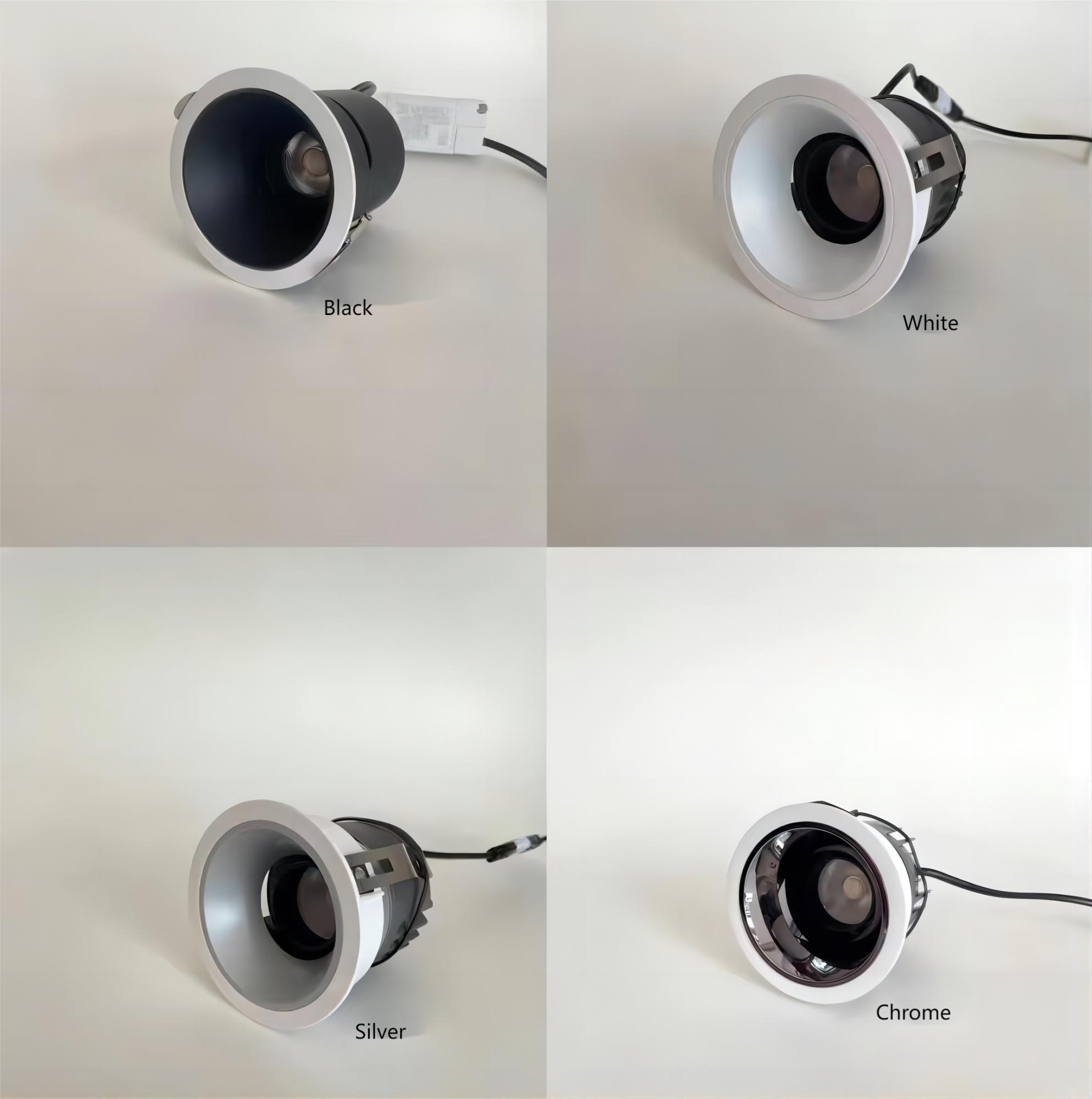
Matching indoor style with light fixture colors: The appearance color of light fixtures should coordinate with the overall interior style. For example, if the interior is dominated by dark furniture, light fixtures can be chosen in black or dark series to maintain consistency in the overall style. For different styles, Nordic style prefers simple and elegant black, white, and gold colors, while American style might lean towards classic nostalgic brass elements.
Coordinating ceiling color with light fixture color: The ceiling color has a significant impact on the choice of light fixture appearance color. For instance, if the ceiling is white, light fixtures can be chosen in colors that contrast with the ceiling, such as black downlights. This can highlight the design of the fixture itself while preventing it from being too conspicuous.
Color rendering and light source color: Light sources with high color rendering can better reproduce the true colors of objects, providing illumination effects closer to natural light. Choosing fixtures with good color rendering can enhance the comfort and visual effect of the living environment.
To determine the appearance color of lamps, indoor style, ceiling color, lighting style and color rendering, to ensure that the lamps can not only meet the lighting needs, but also add indoor beauty and comfort.
5.6 Selecting lights size based on room area.
The area of the light fixture should not exceed 7% of the room area. If the lighting is insufficient, you can increase the number of fixtures or use auxiliary light sources; otherwise, it will affect the room’s decorative effect.
Remember this formula: Lamp size = (space length + width) ÷12 = 60CM
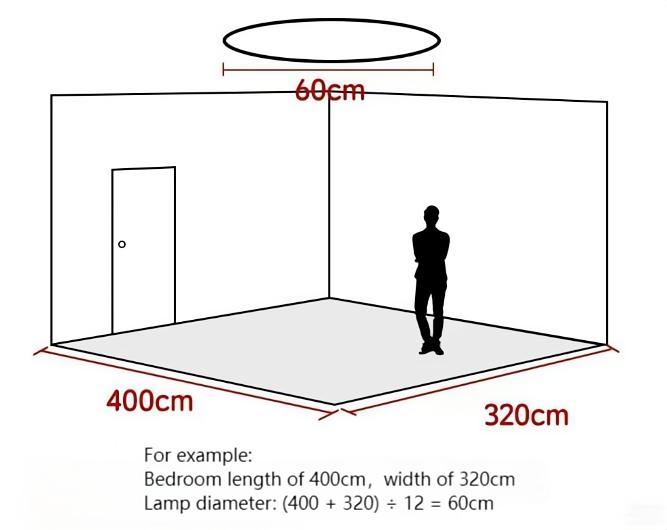
5.6.1 Lights Size of Living Room
For houses with a ceiling height of about 2.7-2.8 meters, it is generally recommended to install fixtures with a height of about 60-70 centimeters. This will make the room feel bright and spacious. Generally, for a living room of 25-35㎡, you can choose a chandelier with 10 heads and a diameter of about 100 cm to create a grand look. For a living room of 20-25㎡, an 8-head chandelier with a diameter of at least 80 cm is recommended.
5.6.2 Lights Size of Bedroom
The bedroom is the place where we spend the most time outside of work and is a haven for relaxation and stress relief. Therefore, a bedroom light that combines warmth, romance, and freshness is especially important. For a bedroom of 15-20㎡, choose a 6-head chandelier with a diameter of 70-80 cm. For a bedroom of 12-15㎡, you can choose a semi-flush mount or a semi-ceiling light with a diameter of about 50 cm. For small bedrooms under 12㎡, a semi-ceiling or full ceiling light with a diameter of about 40 cm will suffice.
5.6.3 Lights Size of Dining Room
The dining room is generally close to the kitchen and has more heat and grease from food, so to maintain cleanliness, the dining room light needs frequent cleaning. Therefore, it is advisable to choose a simple, smooth, and easy-to-clean chandelier.
5.6.4 Lights Size of Study Room
The study room is an important place for work and study, and long hours of desk work can strain the eyes. To protect our eyes and those of our children, it is essential to choose light fixtures with soft lighting. Generally, for a study room of 10-15㎡, a fixture with a diameter of 50 cm is suitable.
5.6.5 Lights size of Balcony, Corridor, and Entrance
Balconies and corridors generally do not require strong lighting, but they do accumulate a lot of dust. Therefore, simple-structured, easy-to-clean small ceiling lights or small chandeliers are sufficient. Generally, a ceiling light with a diameter of about 40 cm can fully meet the lighting needs of balconies, corridors, and entrances.
The choice of the size of the lamp needs to consider the size of the room, the decoration style and the proportion of the lamp and the room to ensure that it can provide enough lighting and beautify the space environment.
5.7 Selecting the Right Beam Angle
Choose an appropriate beam angle based on the specific application scenario.
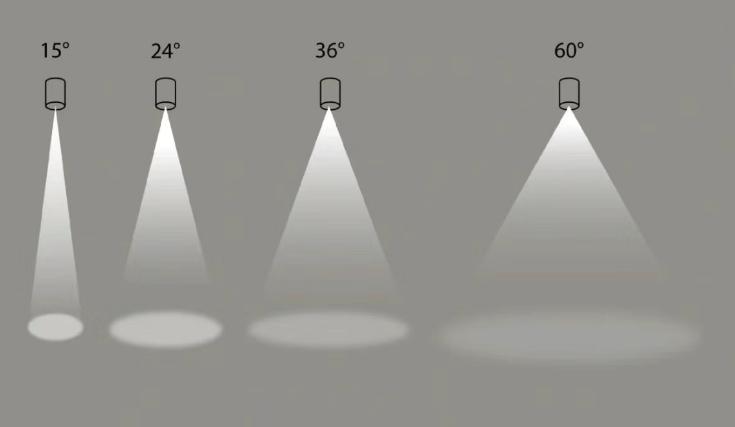
Narrow beam angles typically range from 9° to 15°
Medium angles from 20° to 40°
Wide beam angles are greater than 40°
For example, a 15° beam angle is suitable for scenes requiring strong contrast and focus, such as paintings, sculptures, and other artworks in the home, as well as plants and flowers. On the other hand, 24° and 36° beam angles are suitable for scenarios that require broader and more uniform illumination, such as overall lighting in a home environment, to create a warm and comfortable atmosphere.
5.8 Choosing a high colour rendering index
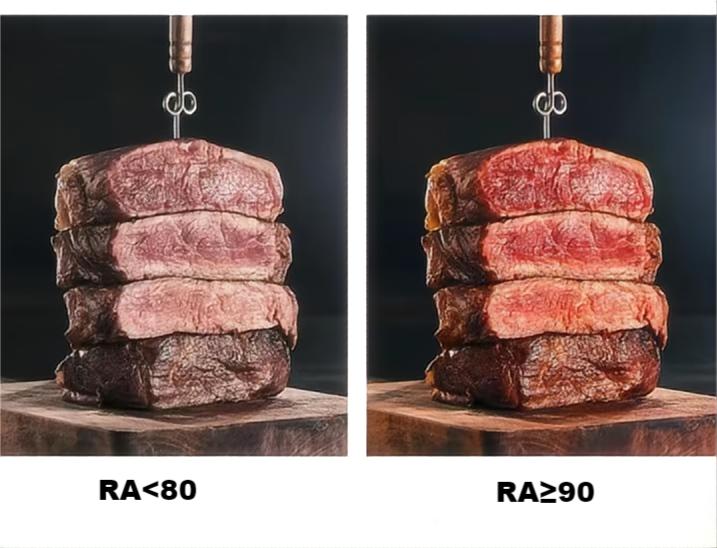
As shown in the image above, high color rendering index (CRI) accurately reproduces the true colors of food, making it look vibrant and appetizing. Lighting with a high CRI is close to natural light and makes skin tones appear more attractive. Low CRI lighting can cause color distortion and easily lead to visual fatigue, potentially causing nearsightedness.
General applications of CRI levels:
-
- Museum and art gallery lighting: Ra≥95 (bright and vivid color reproduction)
-
- Indoor lighting: Ra≥80 (sufficient for accurate color judgment)
-
- Street lighting: Usually Ra≤70 (dull colors with low reproduction accuracy)
5.9 Determine whether the lumens are sufficient for a specific space.
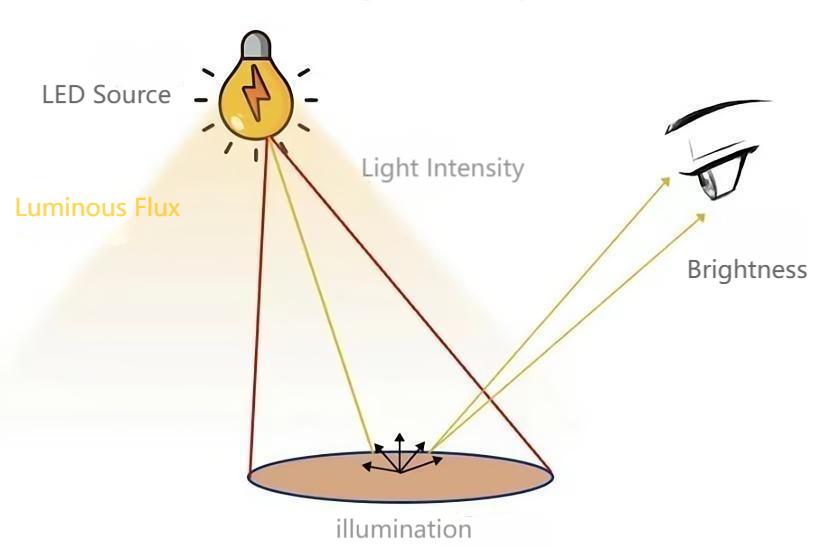
Lumens (lm) are a unit of measurement for the luminous flux emitted by a light source, directly related to the brightness of the light source. When selecting light fixtures, understanding the lumen count can help you determine if the fixture’s brightness meets the needs of a specific space. The higher the lumens, the brighter the light. For areas requiring high brightness, such as living rooms, the recommended average illuminance is above 150 lux; for bedrooms, the recommended average illuminance is above 100 lux; and for studies or reading rooms, the recommended illuminance is above 300 lux. For complex scenarios requiring precise calculations of illuminance and lumens, professional lighting design software (such as DIALux) can be used to simulate and meet the specific brightness requirements of the space.
Select the appropriate lumen output to ensure adequate brightness and energy efficiency. Higher lumens provide more light, which is crucial for well-lit spaces.
5.10 Logo Packaging

For the bulk orders, suppliers typically offer personalized packaging services. In addition to laser engraving the customer’s logo on the light fixture, they will also customize colorful packaging according to the logo original file and design provided by the customer. This helps to enhance brand recognition and convey professionalism.
5.11 Customize the IP level of lights

The choice of IP rating for light fixtures should be determined based on the specific application scenario and waterproofing requirements. For indoor use, light fixtures typically have an IP20 rating or above; for outdoor use, fixtures usually have an IP54 rating or higher to ensure normal operation in harsh environments. When selecting light fixtures, in addition to considering the IP rating, attention should also be paid to the heat dissipation performance of the fixture, especially when choosing fixtures with high waterproof ratings. This is because higher waterproof ratings often mean better sealing of the fixture, which may affect its heat dissipation and consequently impact its lifespan and performance. Therefore, manufacturers should provide fixtures with corresponding ratings based on the product’s waterproof grade positioning defined by market direction, ensuring the safety and reliability of the fixtures in various environments.
6. Why you need to choose Mibang as your reliable custom lighting partner?
At Mibang, we pride ourselves on our ability to deliver high-quality custom lighting solutions tailored to the specific needs of our clients. Here are a few reasons to choose us as your trusted partner:
6.1 Expertise and Innovation
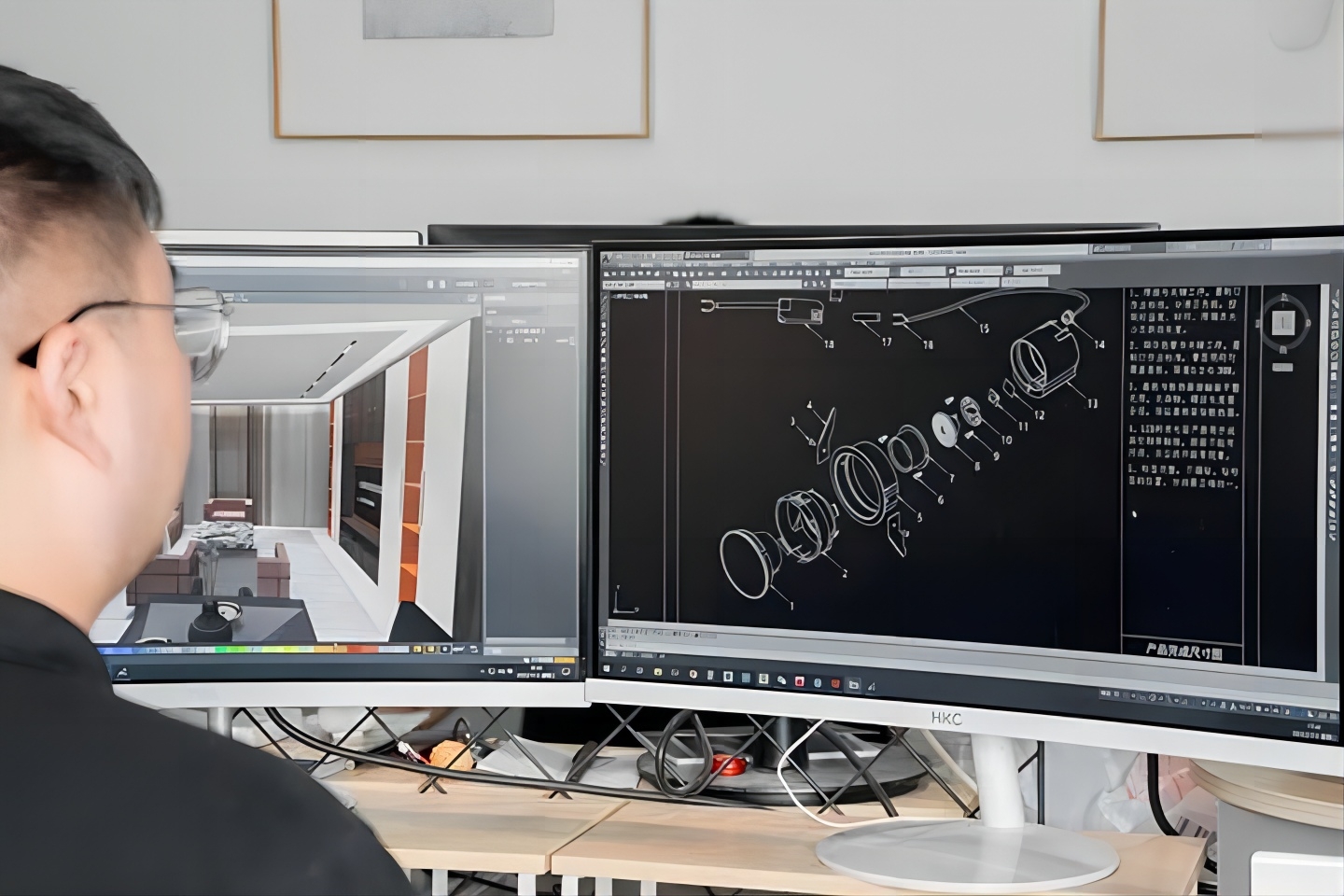
We leverage advanced manufacturing technologies and innovative designs to provide top-notch lighting solutions. Our team of experts is dedicated to staying ahead of industry trends and offering good quality products.
6.2 Quality Assurance
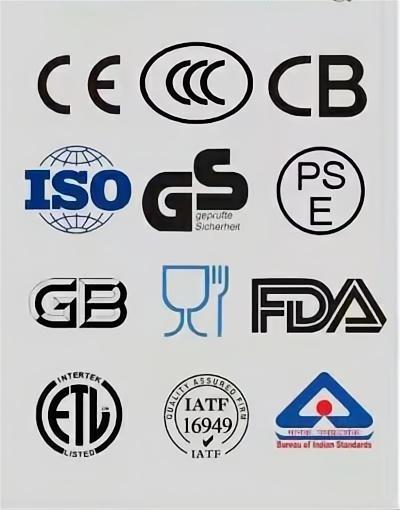
Our strict quality control processes ensure that every product meets the highest standards. We hold relevant certifications and follow rigorous testing protocols to guarantee the best performance.
6.3 Conduct aging tests on lights before shipment
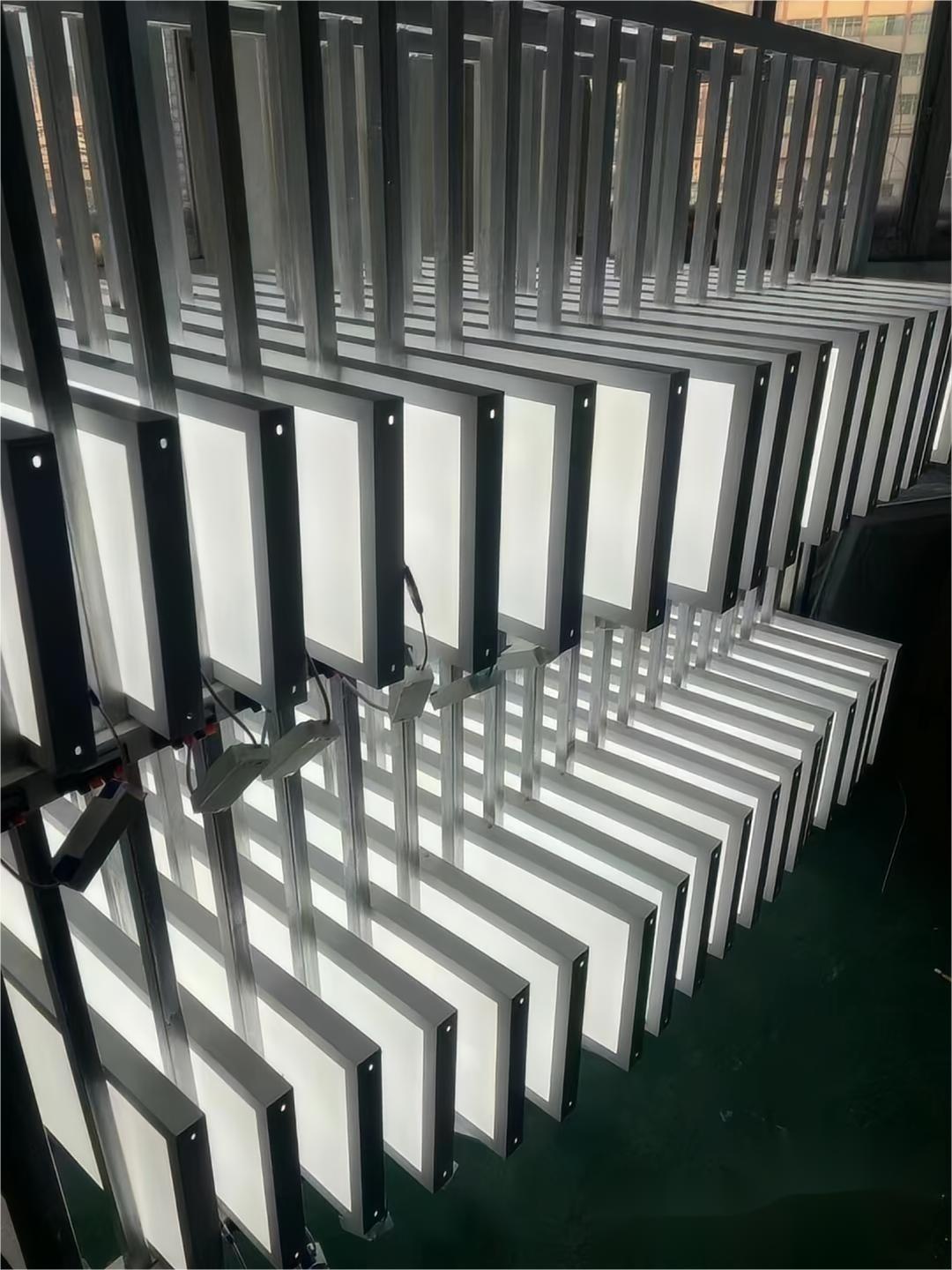
By allowing the light fixtures to operate continuously for 24-72 hours, measuring whether their brightness and color temperature remain stable after prolonged use, and checking if all functions (such as dimming and color changing) work properly, as well as repeatedly switching the lights on and off in different temperature environments to test their endurance, it helps ensure the reliability and durability of the lights in actual use, thereby reducing customer complaints and return rates.
6.4 Comprehensive Services

From initial consultation to after-sales support, we offer comprehensive services to ensure a seamless experience. Our customer-centric approach ensures that all your needs are addressed promptly and effectively.
6.5 High-Quality Raw Materials

We only use high quality aluminum material to make parts such as shell, radiator, heat sink and LED light holder to improve the performance and service life of lighting equipment. High quality aluminum materials have good thermal conductivity, excellent corrosion resistance and high plasticity.
6.6 Global shipping and Logistics Service

We offer efficient freight logistics services to deliver your goods safely and quickly anywhere in the world. Our reliable shipping solutions ensure that your products reach their destination in perfect condition.
7. Successful Cases of Customized Lighting Solutions at Mibang
To illustrate our capabilities, here are a few examples of successful custom lighting projects we have completed:
7.1 Commercial Office Building

We provided customized downlights and track lights that enhanced the office space, improving both aesthetics and energy efficiency. Our solutions helped create a comfortable and productive work environment.
7.2 Residential Complex

Our modern landscape lighting solutions, including LED lights outdoor waterproof landscape lights, transformed the outdoor areas into visually stunning and functional spaces. These solutions enhanced the overall appeal and safety of the residential complex.
7.3 High-end Hotel

We tailored indoor lighting fixtures, such as spotlights and strip lights, to create an warm and comfortable environment. Our custom solutions helped highlight products and improve the customer experience.
7.4 Catholic Church
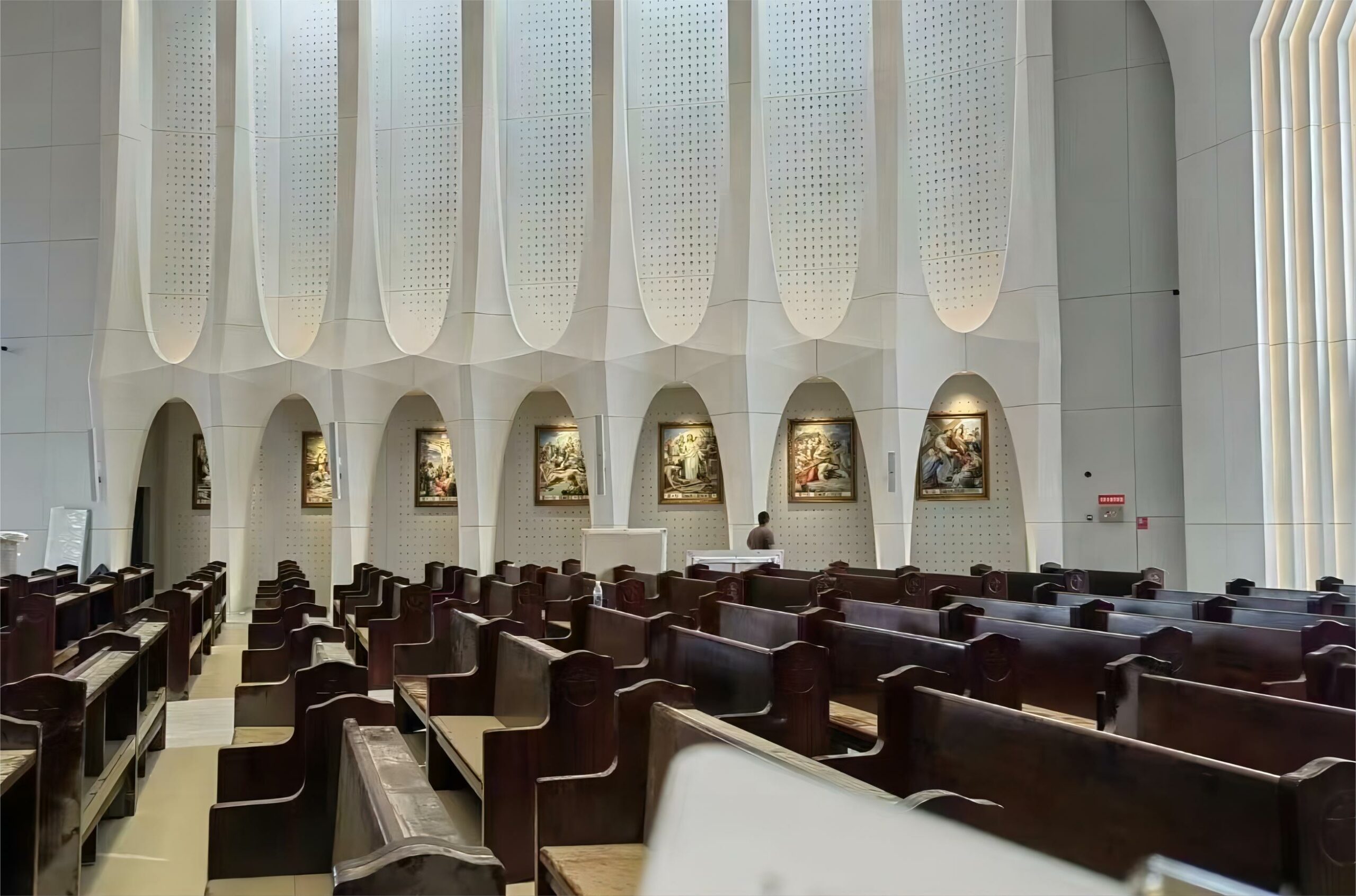
The brand-new lighting effects have breathed new life into the Catholic church. The LED lights are soft and evenly distributed, not only energy-efficient and environmentally friendly but also bringing an unprecedented visual experience to the faithful. The precise control of brightness, color temperature, and colors creates a captivating religious atmosphere, making every prayer and every step of the visit a spiritual baptism.
8. Conclution
Selecting the right custom lighting supplier is crucial for the success of your project. By considering factors such as price, quality, communication, delivery, and after-sales service, you can find a supplier that meets your specific needs. At Mibang, we are dedicated to providing high-quality, customized lighting solutions that enhance the value and appeal of your projects. Contact us now to help you get your customization project lighting off the ground, we’re excited to bring your project vision to life!

Get Instant Quote
*We respect your confidentiality and all information are protected..

